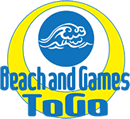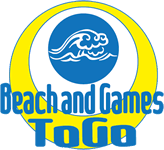Ping Pong Rules
1. Find someone to play with.
You probably want to begin by playing someone who is at about your skill level or a little better, and preferably someone who isn’t aggressively competitive. This way, you can have fun learning how to play. You can play one-on-one, or you can play with two teams of two, which is known as doubles. And you want someone who has regulation ping pong balls, paddles, and a table if you don’t have access to any!
- If your hand-eye coordination is more on par with a three-legged, blind dog, you might want to start practicing against a wall and getting familiar with how the ball and paddle work together. It’s best on a table against the wall, for the record.
- You want to play or practice with celluloid or plastic balls that are orange or white and 40 mm in size. The table should be 2.74 meters (9.0 ft) long, 1.525 meters (5.0 ft) wide, and 0.76 meters (2.5 ft) high. Ping pong paddles don’t have a regulation size, actually. Small paddles are hard to use successfully and bigger paddles weigh too much and are cumbersome. But they must be made of wood and rubber and competition paddles must have two colors (red and black).
2. Decide who serves first.
According to the official International Table Tennis Federation (ITTF) rules, the right to choose whether to serve first is determined “by lot” (i.e. flipping a coin or drawing straws, etc.), with the winner choosing either whether to serve first or which side he or she wants. If the winner chooses whether to serve or to receive, the opposing player or team gets to choose which side of the table they will play on, and vice versa.
- In most recreational ping-pong games, however, the first person to serve is determined by a player standing behind the table and putting the ball in their left or right hand. Then, they ask the opponent to guess which hand the ball is in and if they are correct, then they get to serve first and vice versa.
3. Serve the ball.
From behind the endline, the ball should be tossed out of your free hand vertically a minimum of 16 cm (6 in), and then hit with the paddle so that it first hits your side of the table once and then goes over the net and hits your opponent’s side.
- If you’re playing singles, the server can serve to any point on the opponent’s side of the table, and the opponent should then return it. If playing doubles, the serve is rotated between you and your partner, starting with the person on the right, and the ball must bounce first in the right half of your side of the table and then must be delivered cross-court to your opponent’s side.
- The serve switches sides every two points. After two points have been awarded, your opponent — or in doubles, the person on the opposing team who is cross-court from the server — then gets to serve. After two more points are awarded, the original server (or in doubles, his partner) then serves.
- If the ball hits the net on an otherwise a legal serve, the serve is a “let,” and the serve is repeated with no points scored. While many recreational players award the point to the player opposite of the server after 2 consecutive lets, there is no limit to the number of lets that can be served in table tennis; points are never scored off of lets.
- While many recreational players play such that on game point the person that is losing is to be the server, in actuality service continues to alternate every two serves as usual until the game ends or a deuce score of 10-10 is reached; at game point or match point, it is in fact possible to lose on your opponent’s serve or due to a service error resulting in a fault on your serve.
4. Return the Ball.
After a serve or return, the ball may be returned over or around the net to any point on the opponent’s side of the table. The ball must be returned after it bounces once on your side, but before it bounces twice or hits the floor or any object off the table.
- If the ball hits the net on a return, but proceeds to go over the net and hit your opponent’s side, the ball is still in play, and your opponent must return it.
5. Score Points.
A point is awarded for each rally that is not a let, and either opponent can score a point regardless of who served. Here’s the gist of it:
- If your serve goes into the net, goes off the table without hitting the opponent’s side, or (in doubles) hits the wrong half of the opponent’s side, the receiving opponent or team scores a point.
- If you do not make a legal return (as described above — the ball goes into the net or doesn’t hit your opponent’s side of the table) a point is awarded to your opponent.
- If you receive a legal serve or return and hit the ball more than once with your paddle or touch the ball with your body, a point is awarded to your opponent. Note that if your opponent’s serve or return doesn’t hit your side of the table, you still get the point even if the ball hits you or you catch it after it passes the end of the table.
- If you touch the table with your free hand or move the table, your opponent scores a point.
6. Win the Game.
Many people like to play to 21 or 15 (alternating server every 5 points), which is fine for recreational play. The official rules, however, state play is to 11 points (alternating server every 2 points). In order to win, one must be ahead by two points. If the players or teams are tied at 10-10 or 20-20, for example, the normal order of service proceeds, but the serve alternates sides after every points instead of after every two points.
7. Play Again.
In sanctioned competition, matches are won by the player or team who wins three out of five games. The players switch sides after each game, and they also switch sides in the fifth game (if a fifth game is necessary) when one player or team scores five points.

